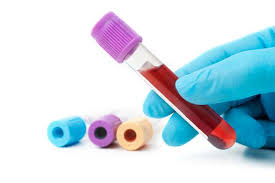By Anu Hosangadi
Liver Cancer Connect’s “Fighting the Doom and Gloom” series is highlighting some of the advances in prevention, screening, and treatment that are helping to increase survival among people with liver cancer. Previously, we talked about how prevention works. Now we’ll explain how screening and surveillance save lives.
Why Are Screening and Surveillance So Important?
Screening and surveillance (regular monitoring) for liver cancer help detect the cancer early. Early detection is one of the most effective ways to improve treatment success and survival rates. Screening refers to the first test to detect cancer or an increased risk for cancer. Surveillance refers to the regular testing or monitoring that is done after the first screening test.
Surveillance in people with risk factors for liver cancer can help detect liver cancer before symptoms occur and while the tumor is small and can be surgically removed. This greatly increases the survival rate.
Who Needs Liver Cancer Screening?
The American Association for the Study of Liver Diseases recommends that men with hepatitis B should start screening/surveillance at age 40 years, and women at age 50. Screening should be done at 6-month intervals. But some high-risk groups could benefit from earlier and more frequent screening and testing. Did you know that as many as 33% of liver cancers that develop in people with chronic hepatitis B infection occur without cirrhosis? So regular monitoring is essential.
Someone with a family member, such as a parent, sibling or child, with liver cancer is about four times more likely to develop liver cancer than someone without such a family history. This increased risk is seen even among people without viral hepatitis. So it’s possible that either genetic factors or shared environmental factors influence the risk of liver cancer. And individuals with more than one risk factor have the highest risk of developing cancer, especially at a young age.
What Does Screening Involve?
Screening for liver cancer involves a physical examination, blood tests to detect levels of a protein called alpha fetoprotein (AFP), and ultrasound imaging. Several new blood tests are being studied to see if they can pick up liver cancer earlier than using AFP and ultrasound. The ultimate goal is to detect the cancer as early as possible, which increases the number of treatment options available, and may increase the treatment successes.
Have More Questions?
- Do I have to go to a liver specialist for screening?
- I was born in a country where hepatitis B is common, but I don’t have any signs of liver disease. Do I need screening?
- Ultrasound, CT, or MRI- what’s the best for diagnosing liver cancer?
For the answers to these questions, check out Liver Cancer Connect’s webinar series on liver cancer, where leading liver disease experts explain what you need to know about liver cancer. Our next blog will cover the treatment options for liver cancer.


